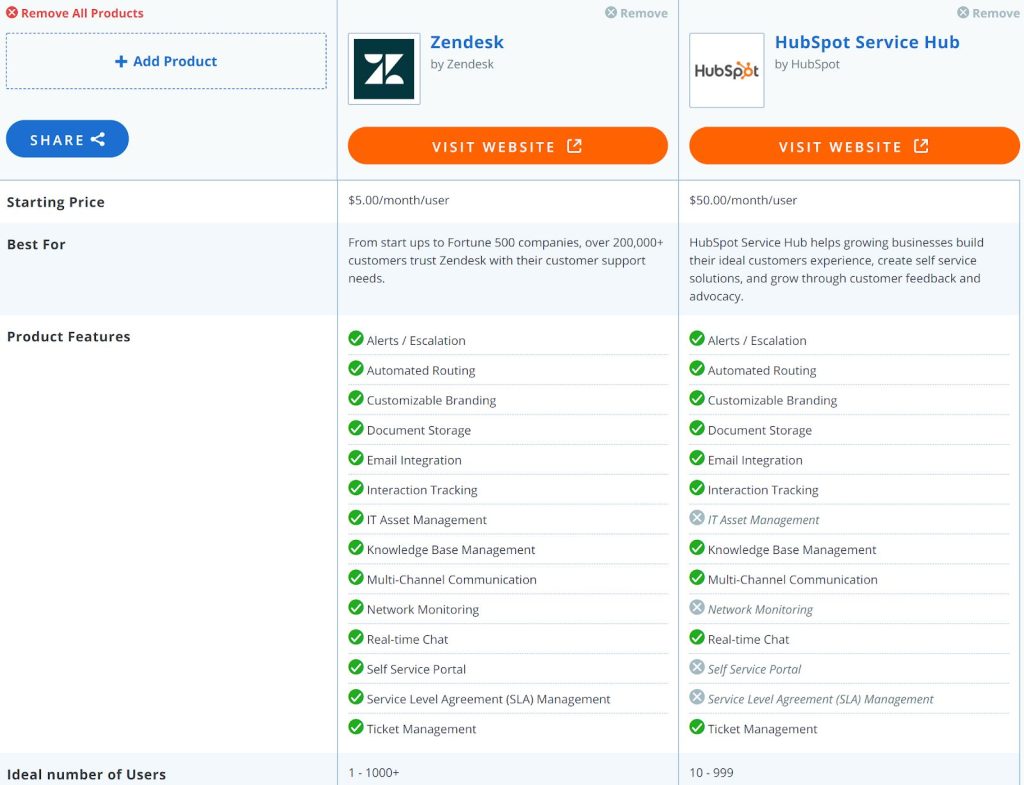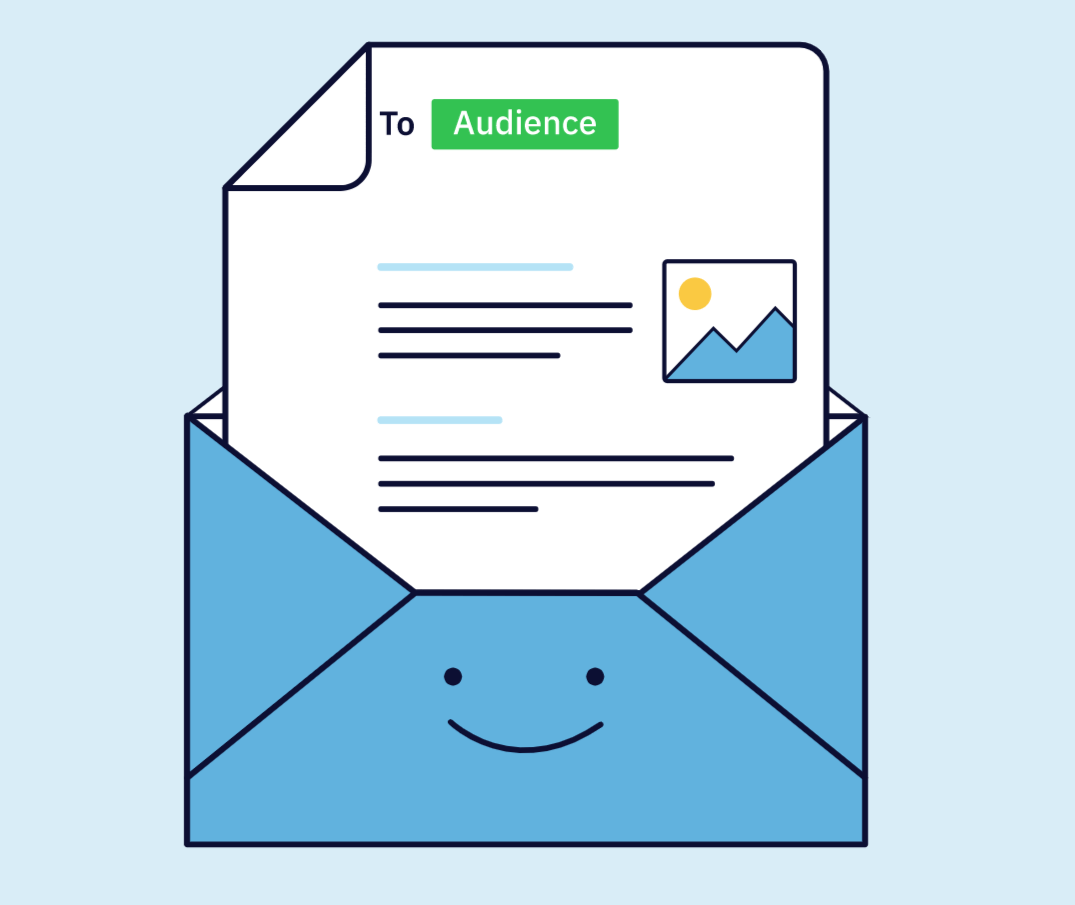
No, the answer has nothing to do with “audacity.”
HubSpot has been around since 2006 and is a frontrunner in the marketing space. If you’ve ever Googled any sales or marketing tips, you’ve more than likely seen its content.
HubSpot has 3,387 employees, earns 675 million in annual revenue, and the only company that threatens it is Salesforce.
HubSpot is essentially a collection of expensive tools that serve as a platform powerful enough to handle all of an organization’s marketing needs. With great power comes great price tags, they say, and HubSpot is no exception.
“We just paid HubSpot a total of $21,600 for a year of service, at $1,800 per month. For our 20,000 contacts it is $600 per month alone. Then we pay an additional $800/month for marketing hub and $400 for sales hub… We have 5 users.”
Sales Manager, Saas Startup

Full disclosure: HubSpot is a solid product that serves many (large) companies very well. It is versatile, powerful, and very customizable. It is not a bad solution for companies who can afford it.
The problem is that small-to-medium companies pay an arm and a leg for HubSpot when they should be using a handful of better tools for much cheaper.
To better understand HubSpot and its price, think of it as four separate tools all integrated with one another. Its viability as a marketing platform isn’t drawn from the power of any of its individual tools, but rather from the fact that they all communicate with each other inherently.
At its core, HubSpot is a CRM. Technically speaking, this is a SQL database of contacts wrapped in a user interface. Untechnically speaking, it’s an enhanced Excel file.
A CRM is a ubiquitous piece of software, and 91% of companies with over 10 employees use one. CRMs are vital to an organization’s success because they provide companies with the ability to digitally manage their sales pipelines, prospects, customers, and more.
HubSpot’s CRM is just that. Information about contacts can be manually added to the platform, but what makes HubSpot special is that prospects can also be automatically added to the CRM from a vast array of triggers ranging from contact forms to landing pages to scanned business cards.
Feature alert: Nutshell does all this too.
The CRM by itself doesn’t do much else. It’s basically just the data that supports the rest of the platform.
Warning: HubSpot charges its users $50/month for every 1000 contacts over their allowed limit, which adds up quickly.

HubSpot’s Sales Hub is the first of its three spokes. The Sales Hub is an overlay of features that sits atop the core CRM, and provides the necessary functions to allow salespeople to make use of their data.
Keep your eyes peeled: Pro users notice that Sales Hub is nearly identical to any other CRM but with a $400/month price tag.
Sales Hub provides users with the tools they need to manage their sales operations from start to finish with basic custom pipelines, task automation, and variable data recording fields.
Users are able to automate emails as sequences, meaning the recipient will get a series of personalized emails unless a specific action is taken, like a reply. This is how most of those “Just sending you another email in case you missed my last one” messages end up in your inbox.
Sales Hub also allows its users to schedule emails to be sent at specific times, making it possible to crank out a day’s worth of emails in a short amount of time.
Unfortunately, these features are only included in bundles that cost $400/month or more. Yikes.
Feature alert: Nutshell does all this for way cheaper.

As you may have guessed, the Marketing Hub is another suite of features that can be run on that initial CRM core. Geared towards marketers, the Marketing Hub provides HubSpot users with lots of oversight into how their data is managed.
The feature list is full of random limitations that seem to serve no purpose other than as money traps. Their base plan allows for 2,000 email sends per month. For $40/month, users can send 5x that, and for $800/mo, they can send 10x that.
Why does the $3,200/month (not a typo) version support 200 currencies when there are only 180 recognized currencies in the world? Do they love establishing limits that much?

HubSpot’s Marketing Hub also features advertisement management, which is actually pretty useful for marketers who manage their ads in-house. This allows users to advertise through third-party ad networks to specific audiences, and then the ad data including clicks and conversions is then sent back to HubSpot so that prospects can receive custom ads and messaging depending on their behavior.
One of the biggest reasons companies choose Marketing Hub is because of its landing page creator. Marketers use this tool to create special web pages that track traffic and compare it against the CRM data.
Landing pages usually feature forms or other ways to capture data in exchange for exclusive content or deals. With automation, a prospect’s behavior on a landing page can automatically bump them into another workflow or pipeline depending on their specific action.
Author’s note: “HubSpot’s landing page builder isn’t as easy as comparable drag-and-drop web tools, like MailChimp or Wix. Anything outside of creating identical, modular pages, will require HTML knowledge. I’m HTML and CSS certified and I still didn’t find it easy.”
Surprisingly, Unbounce offers its landing page creator for $120/month as opposed to Marketing Hub’s $800/month price tag. (When comparing similar features.)
Other cool features in Marketing Hub include blogging, social media management, and even built-in SEO recommendations and warnings that report opportunities and errors across your website.
Service Hub is a ticket-based customer service and account management suite that allows organizations to delight their customers with a slew of features.
Objectively, Service Hub’s comparison against Zendesk is gruesome and embarrassing. It offers fewer features and charges $50 per month to Zendesk’s $5, and that’s just for the starter editions.
At their most expensive tiers, Zendesk costs $89 per month versus Service Hub’s $1,200.

Service Hub has cool features like a knowledge base, video creation, and document support, and also borrows select features from the sales and marketing suites like email sequences and user roles.
You might be wondering why people would pay such a hefty price for a tool that obviously isn’t as good as the competitor. Good question: 👇
“I pay (HubSpot) $900 per month because I need a handful of features in both the sales and marketing suites. It’s $400 for sales, $512 for marketing, and we still have a maximum of 1,000 contacts.”
Office Manager, IT Talent Agency
HubSpot is expensive for a few big reasons, mostly:

Is there a way to get the functionality of Sales Hub without paying hundreds, if not literal thousands per month?
Besides the fact that Nutshell costs a tenth of the price on average, it also offers all the same main functionality, and even paves its own way on certain features, like lead maps. Because of this, Nutshell often outranks HubSpot on comparison sites despite HubSpot’s omnipresence in the sales and marketing world.
Committed to helping sales pros do more selling and less tinkering, Nutshell blows HubSpot out of the water on what matters, including:
(According to various surveys)
Both being CRMs, most features of Nutshell and HubSpot overlap at face value. A few exceptions that stand out:
$ 192
per yearper user per month
per user per month
per user per month
Nutshell
1 User/s $
$ 0
$ 0
$ 0
Annual Charge $
$ 0
$ 0
$ 0
Additional monthly charge $
The head-to-head comparisons are as straightforward as it gets. Sales Hub’s features often lack compared to newer, purpose-built CRMs.
Sales Hub is priced at ten to thirty times its competition solely because of its native integrations with the rest of the HubSpot platform. Users are paying for the ability to have their data seamlessly flow from tool to tool, allowing them to do much more sales and marketing automation.
Bombshell time: Most CRMs have integrations with tools that do all the same stuff as HubSpot, except for way cheaper. Since these tools are usually built by smaller companies with more targeted focuses, their quality tends to whoop their atrociously expensive HubSpot counterparts in head to head comparisons.
HubSpot’s Marketing Hub has a lot of features, which is partially why it costs $800/month for 1,000 contacts, and $3,200 for 10,000 contacts.
Assuming you’re already using a CRM, an integration with an email marketing service like Mailchimp or Constant Contact can replace 90% of the functionality of Marketing Hub.
Mailchimp charges $15/month for its standard plan, affording its users 100,000 contacts, which puts HubSpot’s predatory pricing model into perspective:
Marketing Hub charges $50 per month for every 1,000 additional contacts, meaning an $800 per month plan with 100,000 contacts would cost $5,750 per month.

Constant Contact offers similar function and price to Mailchimp, and includes valuable engagement tools like surveys, polls, landing pages, blogging, and free web hosting.
Nutshell Campaigns also provides a full email marketing automation suite, including templated designs, engagement reporting, and the ability to send newsletters, announcements, and drip sequences, for a fraction of the cost. Nutshell Campaigns is new as of 2021, and is purpose-built to help marketers drive revenue. More info on Nutshell Campaigns’ benefits and features can be found here.
Catch your buyers’ attention at every stage of the funnel with Nutshell Campaigns—an email marketing solution that’s built right into your CRM.

According to tens of thousands of users, Mailchimp and Constant Contact are both easier to use than Marketing Hub, and offer better solutions. Again, HubSpot’s ghastly price is set only by its integrations with the rest of the platform, including the Sales Hub. Spotting a trend?
Landing pages are critical to a marketing team’s success because they add contacts to the CRM, or provide data that directly helps marketers engage with their audiences.
For instance, if a prospect downloads all of your articles on the topic of sending cold emails, that’s data that can be used to keep them engaged in the future.
As far as landing page designers are concerned, Unbounce annihilates Marketing Hub’s product, with the majority of software reviewers voting it easier to use, easier to administer, easier to do business with, etc.
Unbounce integrates with over 100 different tools. Combined with an email marketing tool, this eliminates most organizations’ need for Marketing Hub entirely.
HubSpot’s Service Hub feels like an afterthought when compared straightforwardly against Zendesk and Freshdesk. On lists of best helpdesk software it is nowhere to be found.
It makes sense for HubSpot to add a Service Hub into their suite, considering their CRM and integrations are designed to provide maximum functionality for its users’ data. They would not be fulfilling their purpose if they didn’t offer their own helpdesk solution.
Unfortunately for HubSpot, Service Hub is no one’s first choice. Or tenth, even.
If you assumed that Service Hub is wickedly expensive despite its shortcomings, you guessed right. Service Hub’s middle-of-the-ground solution goes for $320 per month for a bundle of 5 users, whereas competitor Freshdesk goes for $35 per month for one user.
HubSpot’s solutions are often rated worse than its competitors’. Despite this, HubSpot is able to charge five and ten times as much per tool, since users need their solutions to integrate with one another across teams.
For larger companies, this price tag is acceptable. It’s worth it for them to pay through the nose if it means using the same support representatives, hiring only one HubSpot developer, and paying one monthly bill as opposed to several.
For the small to medium businesses that can’t justify spending a few thousand a month, there are ways around this that still offer the majority of the same functions, covering all of HubSpot’s popular features.
DOWNLOAD
Download our CRM Comparison Worksheet to learn how to decide which CRM is right for your business.

Small to medium-sized businesses are avoiding HubSpot but still getting the majority of its popular features by stringing the following applications together with integrations.
Nutshell instead of Sales Hub allows users to create custom pipelines, manage contacts, send automated and personalized emails, and much more, without breaking the bank. Nutshell is an all-in-one CRM and email marketing platform with a maximum price of $49 per month and integrates with all the main players.
Unbounce instead of Marketing Hub’s landing page features allows users to create custom landing pages that integrate with their CRM without breaking the bank. Unbounce costs $120 per month.
Constant Contact instead of Marketing Hub’s marketing distribution features allows users to manage surveys, polls, lead-capture forms, and more. Constant Contact costs $95 per month for companies with 10,000 contacts.
Nutshell Campaigns instead of Marketing Hub’s email marketing tool so that users can send beautifully-designed email newsletters, announcements, and automated drip sequences, without having to rely on a cumbersome product.
Freshdesk instead of Service Hub allows users to prioritize support issues, keep customers happy, collaborate, and build relationships behind the scenes, all for a cool $35 per month.
Zapier for any other tools, as Zapier is like duct tape that holds two pieces of software together, and can be used to tack on any tools your company needs, even if the tool doesn’t integrate with the rest of your suite. Zapier connects 2,000+ applications to one another, and costs $49 per month for its middle-of-the-ground solution.
There are tons of different tools that blow HubSpot out of the water. When shopping for alternatives, be sure to check on the native integrations and make sure it’ll communicate with the rest of your software stack. There’s no need to pay ten times as much just because the HubSpot tools all integrate with one another.
Let’s face it, HubSpot doesn’t have a monopoly on integrations anymore. It’s time for them to stop pricing like they do.
Photo by Jp Valery on Unsplash
Give our powerful, easy-to-use CRM a try for free for 14 days! Or join a live demo to see Nutshell at work!

Join 30,000+ other sales and marketing professionals. Subscribe to our Sell to Win newsletter!